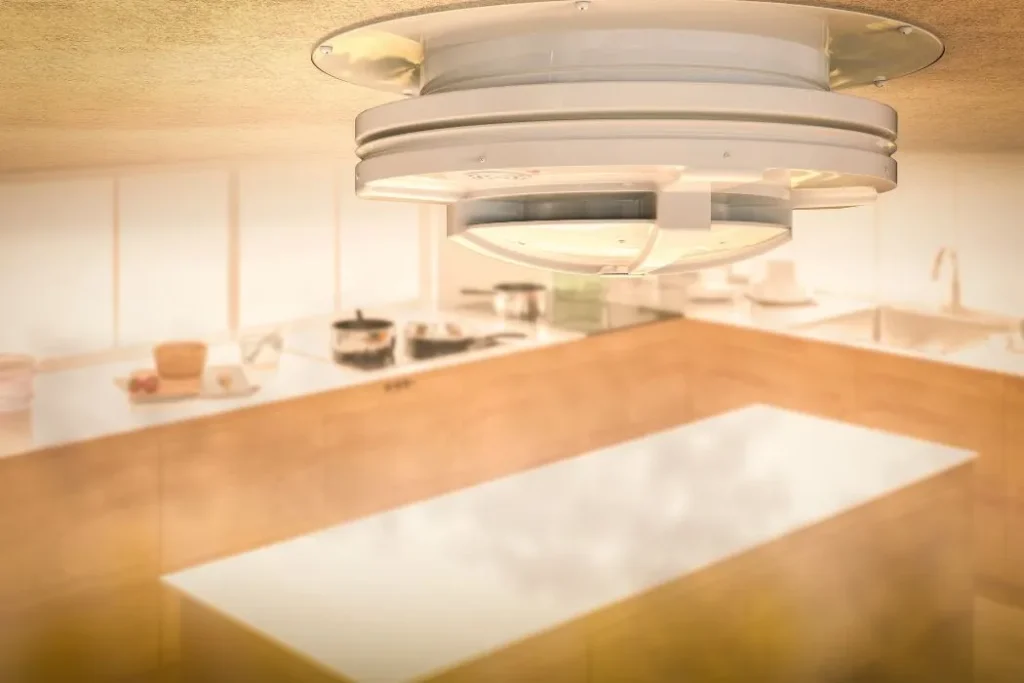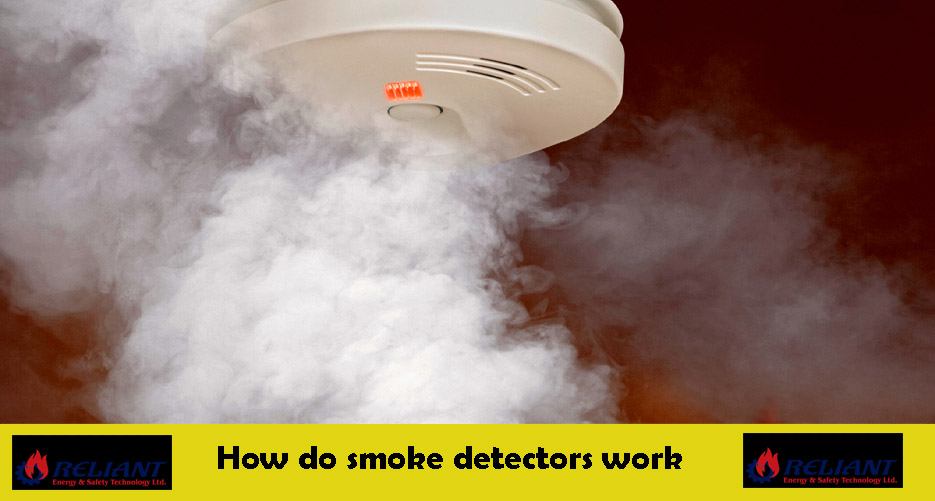Smoke detectors are indispensable for ensuring fire safety in homes and businesses. According to the National Fire Protection Association (NFPA), having functioning smoke alarms can cut the risk of dying in a house fire by half. These devices act as the first line of defense, providing early warnings and critical seconds to evacuate in case of a fire emergency. However, to maximize their effectiveness, it’s crucial to understand how they work, the types available, and where to install them.
In this guide we will know how do smoke detectors work and many more. Read the full guide to know update information.
Fire Safety Statistics
Fire accidents remain a major concern worldwide. In the United States alone:
- A fire-related death occurs approximately every two hours.
- Most fatalities in residential fires occur in homes without working smoke alarms.
- The NFPA estimates that nearly 1,000 lives could be saved annually if all homes had properly maintained smoke detectors.
These statistics emphasize the importance of smoke detectors as life-saving devices. By investing in the right alarms and ensuring they are operational, you can significantly enhance safety.
Visit our detailed guide to know more about essential fire safety tips for manufacturing plants.
Types of Smoke Detectors
Smoke alarms fall into two primary categories:
- Ionization Smoke Detectors – Best for detecting flaming fires.
- Photoelectric Smoke Detectors – Ideal for identifying smoldering fires.
Some modern devices combine both technologies, offering comprehensive protection against various fire types.
How Smoke Detectors Work
Smoke detectors operate by sensing smoke particles in the air. When smoke is detected, they emit a loud alarm to alert occupants. Each type uses a unique detection mechanism:
- Photoelectric Sensors: Detect larger smoke particles from smoldering fires using light scattering.
- Ionization Sensors: Use radioactive material to identify small particles from flaming fires.
Photoelectric Smoke Detectors
Photoelectric smoke detectors are specifically designed to detect larger smoke particles, typically produced by slow, smoldering fires. These fires may result from materials like upholstery, electrical wiring, or mattresses burning without flames for an extended period.
How They Work:
- A light source, usually an LED, is placed inside a sensing chamber.
- At a 90-degree angle to the light source, a photosensitive sensor or photocell is positioned. This setup ensures the sensor is not exposed to direct light under normal conditions.
- When smoke enters the chamber, it scatters the light beam. The scattered light reflects onto the photosensitive sensor.
- This disturbance triggers the alarm, alerting occupants to the presence of smoke.

Key Features of Photoelectric Sensors:
- Early Detection of Smoldering Fires: These sensors excel at identifying slow-burning fires before they escalate into flames, providing extra time for evacuation.
- Reduced False Alarms: They are less sensitive to cooking smoke or steam, making them ideal for placement near kitchens and bathrooms.
- Minimal Maintenance: The design is relatively resistant to dust accumulation, which can reduce false alarms.
Applications:
Photoelectric smoke alarms are suitable for areas with a higher likelihood of smoldering fires, such as bedrooms, living rooms, and offices with electronic devices.
Ionization Smoke Detectors
Ionization smoke detectors are better suited for identifying flaming fires, which generate smaller smoke particles and spread rapidly. Fires involving highly flammable materials like paper, cooking oils, or gasoline often produce minimal smoke initially but intense flames.
How They Work:
- Inside the ionization detector, a small amount of radioactive material (commonly americium-241) is placed between two electrically charged plates.
- This setup ionizes the air in the chamber, creating a small but steady electric current.
- When smoke particles enter the chamber, they disrupt the flow of ionized air and reduce the current.
- This interruption triggers the alarm, warning occupants of the danger.
Key Features of Ionization Sensors:
- Quick Response to Flaming Fires: These detectors are highly sensitive to fires with minimal smoke but intense flames, allowing for faster alerts in such scenarios.
- Compact and Affordable: Ionization detectors are generally smaller and more cost-effective than their photoelectric counterparts.
- Reliable Technology: Proven over decades of use, they remain a staple in fire detection systems.
Applications:
Ionization smoke alarms are best suited for areas prone to fast-burning fires, such as kitchens, garages, and areas with flammable liquids.
Safety Note: While ionization alarms contain radioactive material, the quantity is minimal and carefully sealed, posing no health risk under normal use.
Comparison: Photoelectric vs. Ionization
| Feature | Photoelectric | Ionization |
| Best for Detecting | Smoldering fires | Flaming fires |
| Sensitivity | Larger smoke particles | Smaller smoke particles |
| False Alarms | Rare (less sensitive to steam) | More common with cooking smoke |
| Cost | Slightly higher | Lower |
Dual-Sensor Smoke Alarms
For maximum safety, dual-sensor smoke alarms combine photoelectric and ionization technologies. These devices are ideal for comprehensive protection, covering both smoldering and flaming fire risks.
Choosing the Right Smoke Detector
To select the best smoke detector for your home or business:
- Understand Fire Risks: Determine whether smoldering or flaming fires are more likely in your area.
- Check Certifications: Look for alarms certified by trusted organizations.
- Interconnectivity: Opt for alarms that trigger all connected devices when one is activated.
- Power Source: Choose models with long-lasting power, like 10-year lithium batteries.
- Placement: Install alarms in key areas such as kitchens, hallways, and bedrooms.
Where to Install Smoke Detectors
Smoke alarms should be strategically placed to maximize safety:
- Bedrooms and Hallways: Cover sleeping areas for nighttime protection.
- Kitchen: Use photoelectric alarms to minimize false alarms.
- Living Rooms: Place near flammable materials like curtains or furniture.
Maintenance and Testing
Ensure your smoke detectors remain functional by:
- Testing them monthly.
- Replacing batteries annually or using alarms with long-life batteries.
- Cleaning regularly to remove dust and debris.
- Replacing the entire unit every 8–10 years.
Common Mistakes with Smoke Detectors
Avoid these common errors:
- Installing alarms too close to kitchens or bathrooms, causing false alarms.
- Neglecting regular maintenance and battery replacement.
- Using outdated models without modern features like interconnectivity.
Why Reliant-Est is the Best Choice
At Reliant-Est, we go beyond selling smoke detectors. Our advantages include:
- Expert Guidance: We help you choose the right alarm based on your needs.
- Certified Products: All our devices meet the highest safety standards.
- Comprehensive Solutions: From single alarms to interconnected systems.
- Customer Support: Reliable advice and troubleshooting assistance.
For detailed guidelines on maintaining your electrical systems, check out our Electrical System Maintenance.
Conclusion: How do smoke detectors work
Smoke detectors are critical for fire safety. By understanding their types, mechanisms, and maintenance needs, you can make informed choices to protect your home or business. Don’t wait—invest in quality smoke alarms from Reliant-Est today!
FAQs About Smoke Detectors
Q1: How often should I replace my smoke alarm?
Replace the entire unit every 8–10 years.
Q2: Can smoke detectors detect carbon monoxide?
No, you need a separate carbon monoxide detector.
Q3: Are ionization smoke alarms safe?
Yes, the radioactive material used is minimal and poses no health risks.
Q4: What causes false alarms?
Steam, cooking smoke, or improper placement can trigger false alarms.
Q5: How many smoke alarms do I need?
At least one on every level of your home, including inside bedrooms.
Q6: What’s the benefit of interconnected alarms?
They ensure that all alarms sound simultaneously, providing maximum warning.
Read More: Importance of smoke detector

